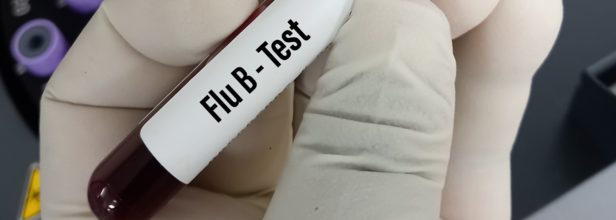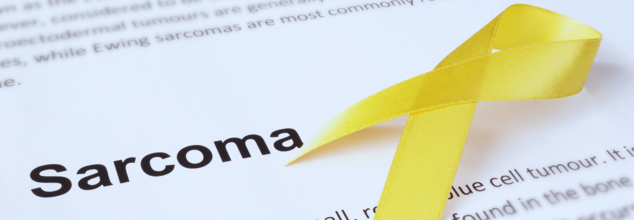- Health Conditions A-Z
- Health & Wellness
- Nutrition
- Fitness
- Health News
- Ayurveda
- Videos
- Medicine A-Z
- Parenting
- Web Stories
Experiencing Knee Pain? Study Shows Your Ears May Be Able To Help

(Credit-Canva)
Knee pain is a common issue that many people throughout the world are affected by. There are many reasons why one experiences knee pain, whether it is due to an injury, prolonged sitting hours, or a condition that affects one's joint health. Relieving it, however, is a different ballgame. People often rely on painkillers or even exercise to relieve their pain, with no substantial results. However, new research suggests an exciting and unexpected path to relief, stimulating a specific nerve through the ear.
A recent study published in the Osteoarthritis and Cartilage Open journal hints that this technique, known as vagus nerve stimulation, could improve knee pain for some people. This fresh approach opens up a new possibility for people who wish for other pain relief than the traditional pain management methods and challenges old ideas about how we can treat chronic discomfort.
How Does The Vagus Nerve Affect our Pain?
The vagus nerve is like the main control wire for your body's "rest and digest" system. It works alongside another system that handles stress and danger. Experts now think that people with ongoing knee pain, especially from common conditions like arthritis and osteoarthritis, might have a mix-up between these two systems. The idea is that by gently "waking up" by gently stimulating the vagus nerve, they could help correct this imbalance, potentially leading to a reduction in pain signals and an overall feeling of well-being.
Promising Early Trial Results
In an early test of this new idea, a small group of patients suffering from knee pain participated. They received a one-hour treatment using a special device, known as transcutaneous auricular vagus nerve stimulation (tVNS), that sits on the ear. This device sends gentle electrical pulses to a part of the vagus nerve that runs through the ear. It's good to know that similar devices are already approved for other health issues, which makes this new use seem more reliable. The early results from this study gave researchers hope that this treatment could really work.
The first findings from the study were very positive. More than a third of the people in the study said their knee pain felt noticeably better after just one treatment. This good result suggests the treatment has real potential. Because these early findings were so promising, the researchers are now planning a bigger study. This next study will include more people and a group that gets a placebo treatment, which will help them confirm if the improvements are truly from the nerve stimulation.
Knee Osteoarthritis Treatment
Experts are very hopeful about this research. They see it as a big step forward in finding new ways to ease knee pain. If larger studies confirm these early results, this work could lead to major improvements in how we treat conditions like knee osteoarthritis.
Just as most conditions have a unique effect on people, medication and specific treatments work better with some people than others. This treatment could give patients a much-needed new option when other treatments haven't helped. This new method has the potential to greatly improve the lives of many people dealing with constant knee pain.
Family Urges Flu Vaccination After 8-Year-Old's Near-Fatal Influenza B Fight

Credits: Canva
Millie Campbell was just eight years old in 2019 when a missed flu shot turned into a life-threatening ordeal, notes ABC News, Australia. What began with aches in her legs soon escalated into multiple organ failure caused by influenza B, a virus her parents never imagined could be so severe.
“They had to drain 200 millilitres of fluid from her heart, it was struggling,” her mother Stephanie Campbell recalled. “I think the doctor's words were: ‘Your daughter could die tonight’.”
Millie was airlifted from Newcastle to Westmead Children’s Hospital in Sydney, reports ABC News. Soon after arriving, she went into cardiac arrest. Her father, Ian Campbell, described the scene as surreal. “There was no indication she was going to survive,” he said.
A Long Road to Recovery
Millie, previously fit and healthy with no pre-existing conditions, spent weeks in intensive care and six months in hospital. The damage from being on life support for so long led to poor circulation, and eventually, doctors had to amputate her left foot.
She had to learn to walk again. Today, reports ABC News, Millie uses a prosthetic leg and has turned to swimming not just for rehabilitation, but as a passion, one that has taken her to national championships and World Trials. Her eyes are now set on the 2028 Paralympics in Los Angeles.
“Millie’s recovery will be a lifelong journey,” Ms Campbell said. “Seeing how severe the flu can be, our message is: talk to your medical practitioner about the vaccine.”
Why Influenza B Is Hitting Children Hard
Although influenza A typically gets more public attention due to its pandemic potential, Australia has seen a sharp rise in influenza B cases, especially in children aged 5 to 16. According to Professor Patrick Reading from the World Health Organization (WHO) Collaborating Centre for Influenza Research, type B can often be more severe in children, though the reason remains unclear.
“It's a bit of a mystery,” Professor Reading told ABC News. “We see this association, but we can't say there's something specific about the virus that causes it to affect children more.”
Vaccination rates among this age group are currently the lowest of all, following a steady decline since the COVID-19 pandemic. Professor Reading warned that fading immunity, combined with lower vaccine uptake, is placing a burden on the healthcare system.
“We're not through the worst of it yet. Flu circulation continues through August to October,” he added. “It’s not too late to get vaccinated.”
Confusion Around Flu Vaccine Access
Millie’s parents said they’d always kept up with her vaccinations. But once she turned five, they mistakenly believed the flu wasn’t a major risk anymore.
Under the National Immunisation Program (NIP), the flu vaccine is free only for children aged six months to five years, people over 65, and other vulnerable groups.
In contrast, states like Queensland and Western Australia are temporarily offering free vaccines to all residents, a move public health experts say should be adopted nationally.
Julie Leask, a vaccination policy expert from the University of Sydney, told ABC News, the current risk-based model isn't working. “When a vaccine is on the NIP, it sends a strong message that it's important,” she said. “Some doctors still wrongly advise against it for kids.”
Misinformation and Vaccine Hesitancy
Falling childhood vaccination rates, rising anti-vaccine sentiment, and misinformation, especially on social media, have complicated public health efforts.
Professor Leask pointed to anti-vaccine rhetoric, such as that from US politician Robert F. Kennedy Jr., as a growing influence in Australia. Kennedy has falsely linked vaccines to autism and recently pushed against COVID-19 vaccinations for children and pregnant women.
“We’re seeing the mainstreaming of misinformation,” Leask warned. “It’s having a ripple effect here too.”
Research shows common reasons parents skip the flu shot for kids include a lack of awareness, absence of a healthcare provider recommendation, time constraints, cost, and safety concerns.
A Family’s Call to Action
As Millie thrives in her new life, her parents remain vocal about the importance of vaccination.
“This growing hesitancy is driven by people struggling to tell the difference between facts and misinformation,” Mr Campbell said. “Most people spend more time on social media than listening to experts, but that’s not where you should be getting your health advice.”
“Vaccination protects not just your child but the whole community.”
The Hidden Turmoil: Why Our Youth Are Quietly Crumbling and What We Can Do About It

In an age of endless scrolling, instant likes, and constant comparison, the mental health of young people is taking a nosedive and fast. The rise in depression, anxiety, self-harm, suicide, and behavioural disorders has exploded in recent years, especially in the wake of the COVID-19 pandemic. Yet, the real tragedy is often hidden behind filtered selfies and people who aren't paying attention.
Quoting the World Health Organisation, Dr. Monica Sood shares that one in seven adolescents between the ages of 10 and 19 globally suffers from a mental health problem. Suicide is the fourth most common cause of death among teens. In India, the numbers are no less harrowing—“a student kills themselves every hour,” says the National Crime Records Bureau.
This is a generation supposedly poised to “have it all”, but as Dr. Sood says, they’re instead buckling under immense pressure, from academic demands and the need for social validation to competition with peers, family expectations, and uncertainty about the future.
While awareness is slowly improving, Dr. Sood laments that “conversations about youth mental health are still clouded by stigma, cultural denial, and a lack of resources.” Therapy remains a luxury, school counselling is scarce, and what should be called burnout has been normalised as digital fatigue.
The Root Causes Go Beyond Exams
Dr. Sood argues that to truly address the crisis, we need to dig deeper. “We need to realise that the crisis is more than just schoolwork or screen time.” Instead, it’s the result of a complicated mesh of factors:
- Unrealistic expectations from society: The pressure to be perfect in every way is, in Dr. Sood’s words, “a psychological war zone.”
- Dysfunctional families: Emotional unavailability, abuse, neglect, and overcontrol can deeply harm a child’s sense of self.
- Lack of emotional vocabulary: Many young people don’t have the words to express what they’re feeling. Instead, their pain shows up as anger, withdrawal, or substance abuse.
- Unfiltered digital exposure: Curated lives on social media fuel jealousy, insecurity, and body image issues.
- Loss of spiritual and community ties: “The feeling of being part of something bigger is fading,” warns Dr. Sood.
A Mental Health Renaissance
But all is not lost. Dr. Sood lays out a refreshingly bold and unconventional action plan for what she calls a mental health renaissance—one that starts in schools and ends in society-wide reform.
Mindfulness and Emotional Literacy in the Curriculum
Dr. Sood urges schools to teach children how to manage their emotions just as they teach math. Weekly lessons in emotional intelligence, stress management, and nonviolent communication should begin from Class 1. “Add art therapy, journaling, breathing exercises, and storytelling,” she suggests, to make these lessons stick.
Empathy Ambassadors in Every Institution
Dr. Sood calls for a peer-led model of support—“Every school, college, and university should choose and train a few older students or peers to be ‘Empathy Ambassadors’.” These students should be trained to listen, maintain confidentiality, and support others in crisis. Sometimes, peer support can be more approachable than formal therapy.
Digital Detox Sabbaticals
“We fast for our bodies; we should fast for our minds too,” Dr. Sood says. She recommends monthly ‘silent days’ in schools and families—no screens, no judgements, just fun, creativity, and nature.
Rebuilding Sacred Third Spaces
Beyond home and school, young people need judgement-free zones to simply exist. “Think of libraries, community centres, and parks as ‘mental sanctuaries’,” says Dr. Sood. These could host music corners, open mic nights, and wellness cafés.
Combining AI, Ayurveda, and Psychology
Dr. Sood’s final suggestion marries ancient Indian wisdom with modern science—“Use Ayurvedic mind-body typing, psychometric tests, and AI-based behavioural tracking to make personalised mental health plans.” She envisions a future where technology aids rather than overwhelms, offering tailored, holistic mental health solutions.
The Body’s Own Fabric Turns Fatal: What You Need to Know About Sarcomas

When we talk about cancer, breast, lung, and colon usually dominate the conversation. But lurking quietly in the background is a lesser-known, often overlooked type: sarcomas. These rare cancers, which take root in connective tissues, don’t always get the attention they deserve. Yet, they deserve it and how.
Not Just One, But Many Types
Sarcomas are a group of cancers which arise from body tissues. It can be from bone, fat, muscle, tendons, nerves, blood and lymph vessels are the predominant ones.
Unlike most other cancers that generally strike older adults, sarcomas don’t discriminate by age. “These cancers can occur in relatively younger age groups,” Dr. Karthik K S, Consultant, Surgical Oncology at KMC Hospital, Mangalore, says. Sometimes, these are also triggered by certain genetic mutations, making them all the more complex.
The Trouble with Tumours
These tumours can quietly grow in any part of the body, which means the symptoms are often subtle and deceptive. Dr. Karthik says, “Presentations may be much simpler than the consequences. Unplanned treatment may lead to rather grievous consequences.”
Because of the wide-ranging locations where sarcomas can appear, they often call for specialists across disciplines. “The treatment of these types of cancers will need specialised doctors, often oncologist surgeons, medical and radiation oncologists,” he explains. In short, a generalist approach just won’t do.
Diagnosis: More Than Just a Scan
Before treatment even begins, the real detective work starts. “The patient will need a full evaluation,” says Dr. Karthik. That begins with imaging, but even this depends on where the sarcoma has taken hold. Once imaging has painted a picture, a biopsy is essential. “These diseases need a biopsy to prove the diagnosis and often subclassify the disease based on IHC (immunohistochemistry),” he says.
If there’s a suspicion of hereditary involvement, genetic studies may also be required. Only once everything is on the table—stage, type, and location—can doctors chalk out a treatment plan.
Surgery Takes the Lead
According to Dr. Karthik, “treatment includes surgery as a main modality of treatment.” But it’s rarely a one-man show. “Treatment may also include chemotherapy and radiotherapy,” he adds, making it a team effort from start to finish.
Kids Are Not Spared
Dr. Sachin Sekhar Biswal, Medical Oncology Consultant at Manipal Hospital, Bhubaneshwar, draws attention to another critical aspect: age is no protection. “Connective tissue is an important constituent of the human body. The cancer that arises from the connective tissue mostly constitutes sarcoma. It can be seen in all age groups, starting from infancy to geriatric populations.”
In fact, in children, sarcomas are surprisingly common. “Rhabdomyosarcoma is the most common type of cancer in the children,” Dr. Biswal states. “Apart from that, osteosarcoma and Ewing's sarcoma are also common types of sarcomas in children.”
Symptoms
Since sarcomas can develop anywhere in the body, the symptoms can be vague or misleading. Dr. Biswal points out, “It can present as a progressively increasing swelling or a lump, bone overgrowth with pain, swelling or limitation in the range of motion, or simply a vague lump based on its location.”
Which is why early detection is tough and treatment becomes even more time-sensitive.
Teamwork Makes the Treatment Work
Dr. Biswal explains that sarcoma treatment is not a one-specialist show. “Sarcoma treatment is always a multimodality effort involving medical and surgical oncologists, orthopaedic oncologists, radiation oncologists, interventional radiologists, onco-pathologists and the rehabilitation team.”
He shares that the most common treatment plan includes “surgical excision followed by radiation or chemotherapy”. When it comes to bone or limb sarcomas, gone are the days when amputation was the only solution. “Limb salvage therapy rather than amputation is the new way. It can be achieved by high-quality implants or autografts,” he adds.
Speed Is Everything
Time really is of the essence. Dr. Biswal stresses, “Though rare, the tendency to metastasise is high, such that diseases like Ewing’s sarcoma are considered systemic from the very time of diagnosis.” In other words, even at diagnosis, it’s already a whole-body concern.
But with timely diagnosis and swift treatment, outcomes can be significantly improved. “A timely diagnosis and a prompt treatment can save a life and avoid much morbidity,” Dr. Biswal reminds us.
© 2024 Bennett, Coleman & Company Limited


